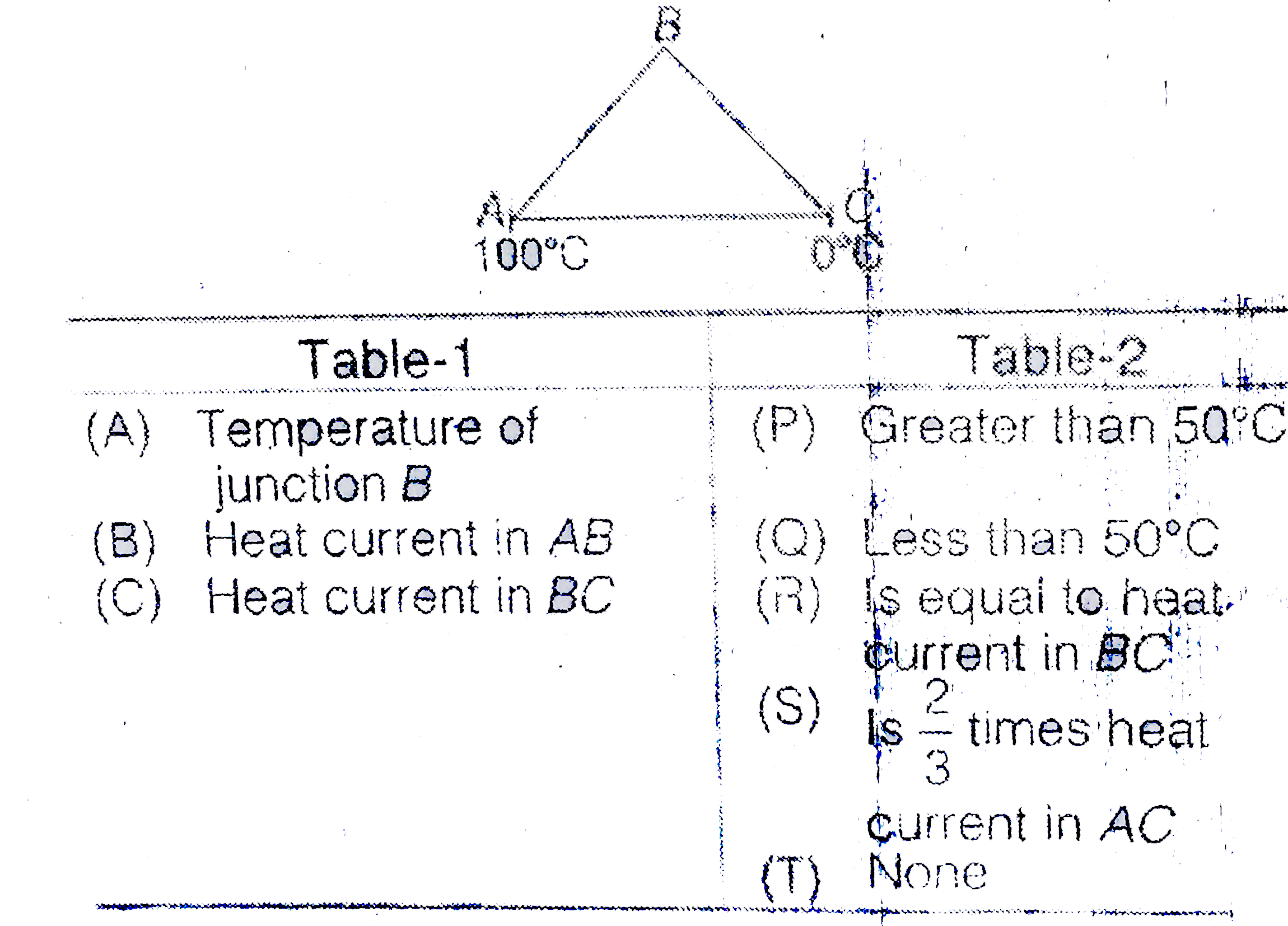If a rod AB of length 2 units slides on coordinate axes in the first quadrant. An equilateral triangle ABC is completed with C on the side away from O. Then, locus of C is
x2+y2−xy+1=0
x2+y2−xy√3+1=0
x2+y2+xy√3−1=0
x2+y2−xy√3−1=0
The correct Answer is:D
To find the locus of point C in the given problem, we will follow these steps:
Step 1: Set up the coordinates
Let the coordinates of point A be (x, 0) on the x-axis and point B be (0, y) on the y-axis. Since the length of rod AB is 2 units, we have:
√x2+y2=2
This implies:
x2+y2=4(1)
Step 2: Determine the coordinates of point C
Since triangle ABC is equilateral, we can express the coordinates of point C in terms of angles. Let the angle at O (angle OAB) be θ. The coordinates of point C can be derived from the properties of the equilateral triangle.
Using trigonometric identities, we can find the coordinates of point C. The coordinates of C can be expressed as:
C(xC,yC)=(x+2cos(60∘+θ),y+2sin(60∘+θ)
Using the fact that cos(60∘)=12 and sin(60∘)=√32, we can simplify this further.
Step 3: Express C's coordinates in terms of θ
Using the angle addition formulas:
xC=x+2(12cosθ−√32sinθ)
yC=y+2(√32cosθ+12sinθ)
This simplifies to:
xC=x+cosθ−√3sinθ(2)
yC=y+√3cosθ+sinθ(3)
Step 4: Substitute x and y from equation (1)
From equation (1), we can express y in terms of x:
y=√4−x2
Substituting this into equations (2) and (3) gives us the coordinates of C in terms of x and θ.
Step 5: Find the locus of C
To find the locus, we eliminate θ from the equations. We can square equations (2) and (3) and add them together:
x2C+y2C=(x+cosθ−√3sinθ)2+(√4−x2+√3cosθ+sinθ)2
After simplification, we will arrive at an equation of the form:
x2C+y2C−√3xCyC−1=0
Final Equation
Thus, the locus of point C is given by:
x2+y2−√3xy−1=0
Let the coordinates of point A be (x, 0) on the x-axis and point B be (0, y) on the y-axis. Since the length of rod AB is 2 units, we have:
√x2+y2=2
This implies:
x2+y2=4(1)
Since triangle ABC is equilateral, we can express the coordinates of point C in terms of angles. Let the angle at O (angle OAB) be θ. The coordinates of point C can be derived from the properties of the equilateral triangle.
C(xC,yC)=(x+2cos(60∘+θ),y+2sin(60∘+θ)
Using the fact that cos(60∘)=12 and sin(60∘)=√32, we can simplify this further.
Using the angle addition formulas:
xC=x+2(12cosθ−√32sinθ)
yC=y+2(√32cosθ+12sinθ)
This simplifies to:
xC=x+cosθ−√3sinθ(2)
yC=y+√3cosθ+sinθ(3)
From equation (1), we can express y in terms of x:
y=√4−x2
Substituting this into equations (2) and (3) gives us the coordinates of C in terms of x and θ.
To find the locus, we eliminate θ from the equations. We can square equations (2) and (3) and add them together:
x2C+y2C=(x+cosθ−√3sinθ)2+(√4−x2+√3cosθ+sinθ)2
After simplification, we will arrive at an equation of the form:
x2C+y2C−√3xCyC−1=0
Thus, the locus of point C is given by:
x2+y2−√3xy−1=0
Topper's Solved these Questions
- COORDINATE SYSTEM AND COORDINATES Book:ARIHANT MATHS ENGLISHChapter:COORDINATE SYSTEM AND COORDINATES Exercise:Exercise (More Than One Correct Option Type Questions)
Explore 7 Videos
- COORDINATE SYSTEM AND COORDINATES Book:ARIHANT MATHS ENGLISHChapter:COORDINATE SYSTEM AND COORDINATES Exercise:Exercise (Passage Based Questions)
Explore 5 Videos
- COORDINATE SYSTEM AND COORDINATES Book:ARIHANT MATHS ENGLISHChapter:COORDINATE SYSTEM AND COORDINATES Exercise:Exercise For Session 4
Explore 17 Videos
- CONTINUITY AND DIFFERENTIABILITYBook:ARIHANT MATHS ENGLISHChapter:CONTINUITY AND DIFFERENTIABILITYExercise:Exercise (Questions Asked In Previous 13 Years Exam)
Explore 20 Videos
- DEFINITE INTEGRALBook:ARIHANT MATHS ENGLISHChapter:DEFINITE INTEGRALExercise:Exercise (Questions Asked In Previous 13 Years Exam)
Explore 38 Videos
Similar Questions
An ellipse hase semi-major of length 2 and semi-minor axis of length 1. It slides between the coordinates axes in the first quadrant while mantaining contact with both x-axis and y-axis. The locus of the centre of the ellipse is
View SolutionOX and OY are two coordinate axes. On OY a fixed point P(0,c) is taken and on OX any point Q is taken. On PQ, an equilateral triangle is described, its vertex R being on the side of PQ away from O . Then prove that the locus of R is y=√3x−c
View SolutionA rod PQ of length 2a' slides with its ends on the axes then locus of circumference of triangle OPQ
View SolutionDraw an equilateral triangle one of whose sides is of length 7 cm.
View SolutionIf the plane x2+y3+z4=1 cuts the coordinate axes in A,B,C, then the area of triangle ABC is
View SolutionIn an equilateral triangle ABC the side BC is trisected at D . Prove that 9 AD2=7 AB2
View SolutionThree rods of equal length of same material are joined to form an equilateral triangle ABC as shown in figure. Area of cross-section of rod AB is S, of rod BC is 2S and that of AC is S. Then match the following.

View SolutionElectric charge of 1μC,−1μC and 2μC are placed in air at the corners A, B and C respectively of an equilateral triangle ABC having length of each side 10 cm. The resultant force on the charge at C is
View SolutionA rod AB of length 30 cm moves such that its ends always touching the co-ordinate axes. Determine the locus of a point C of the rod if AC : BC = 2 : 1
View SolutionIn an equilateral triangle ABC, D is a point on side BC such that BD=13BC. Prove that 9AD2=7AB2.
View Solution